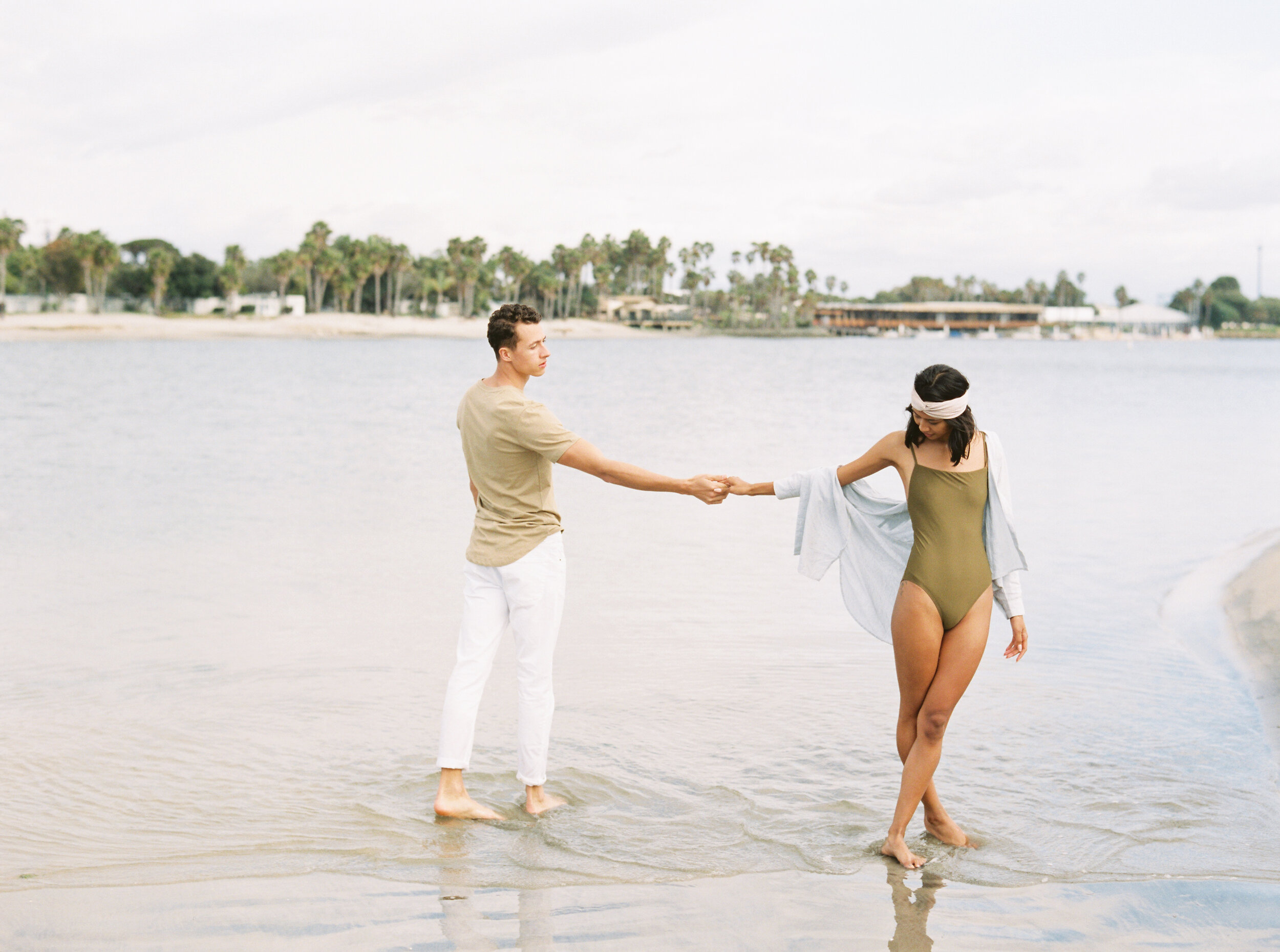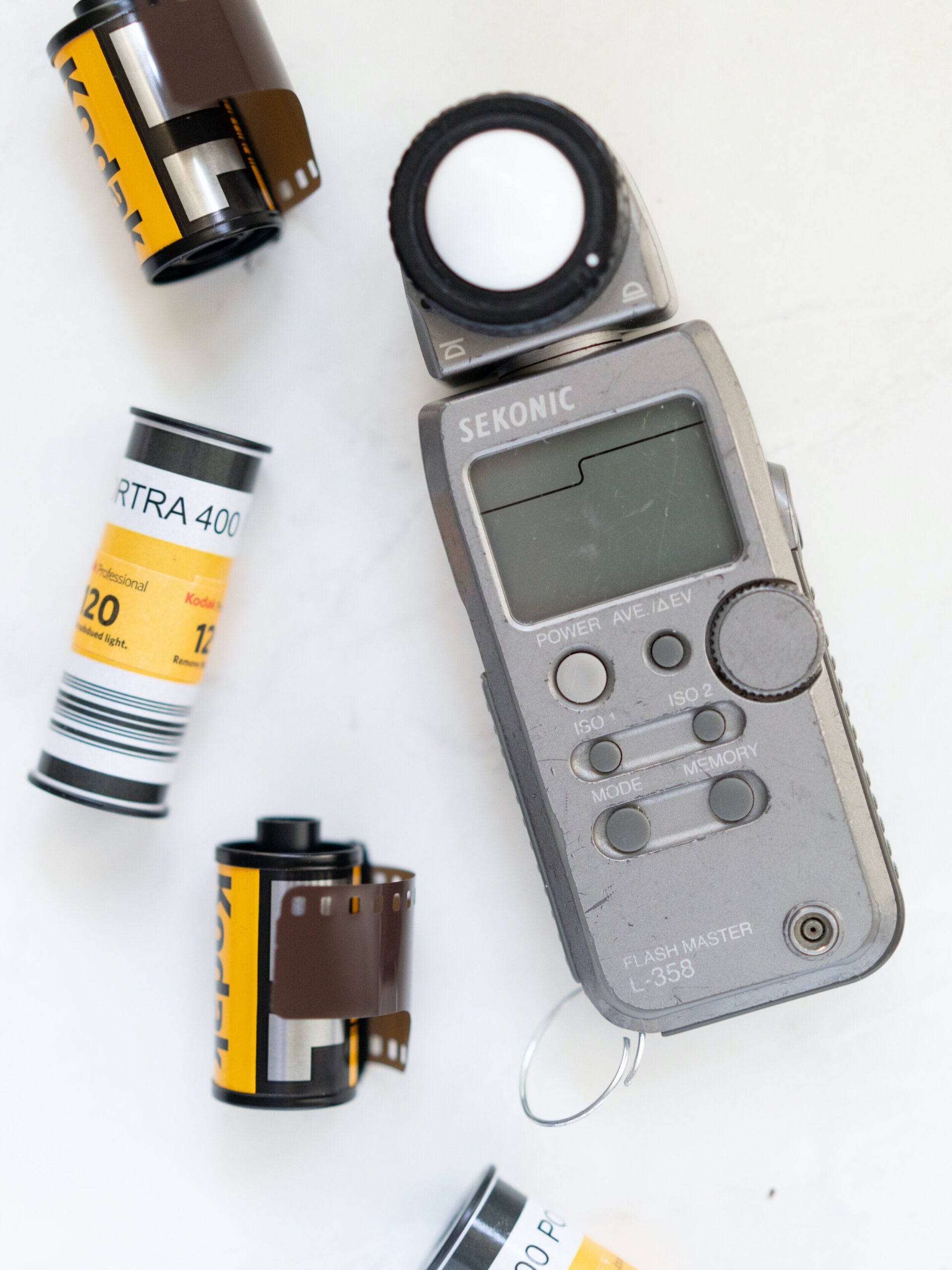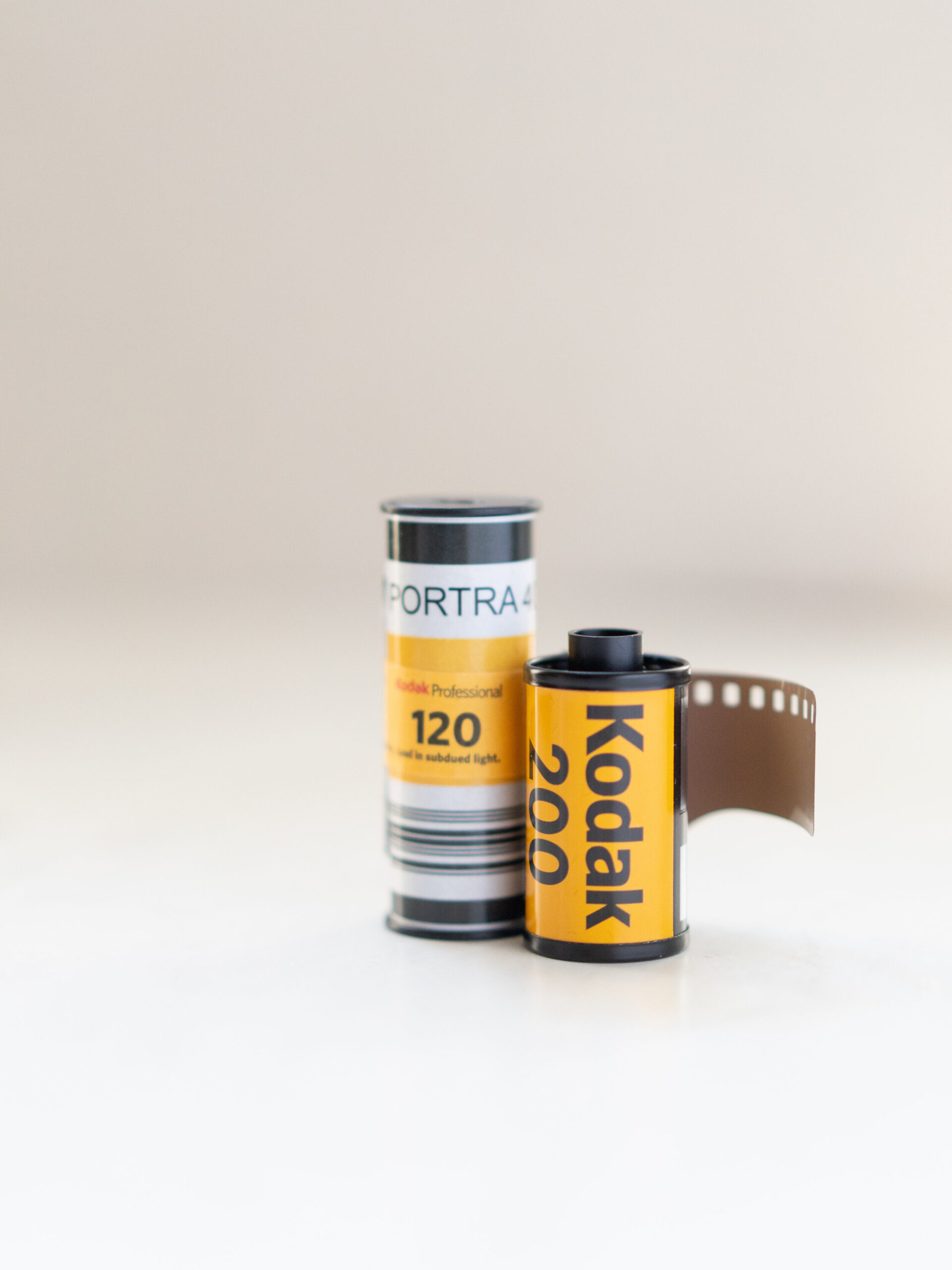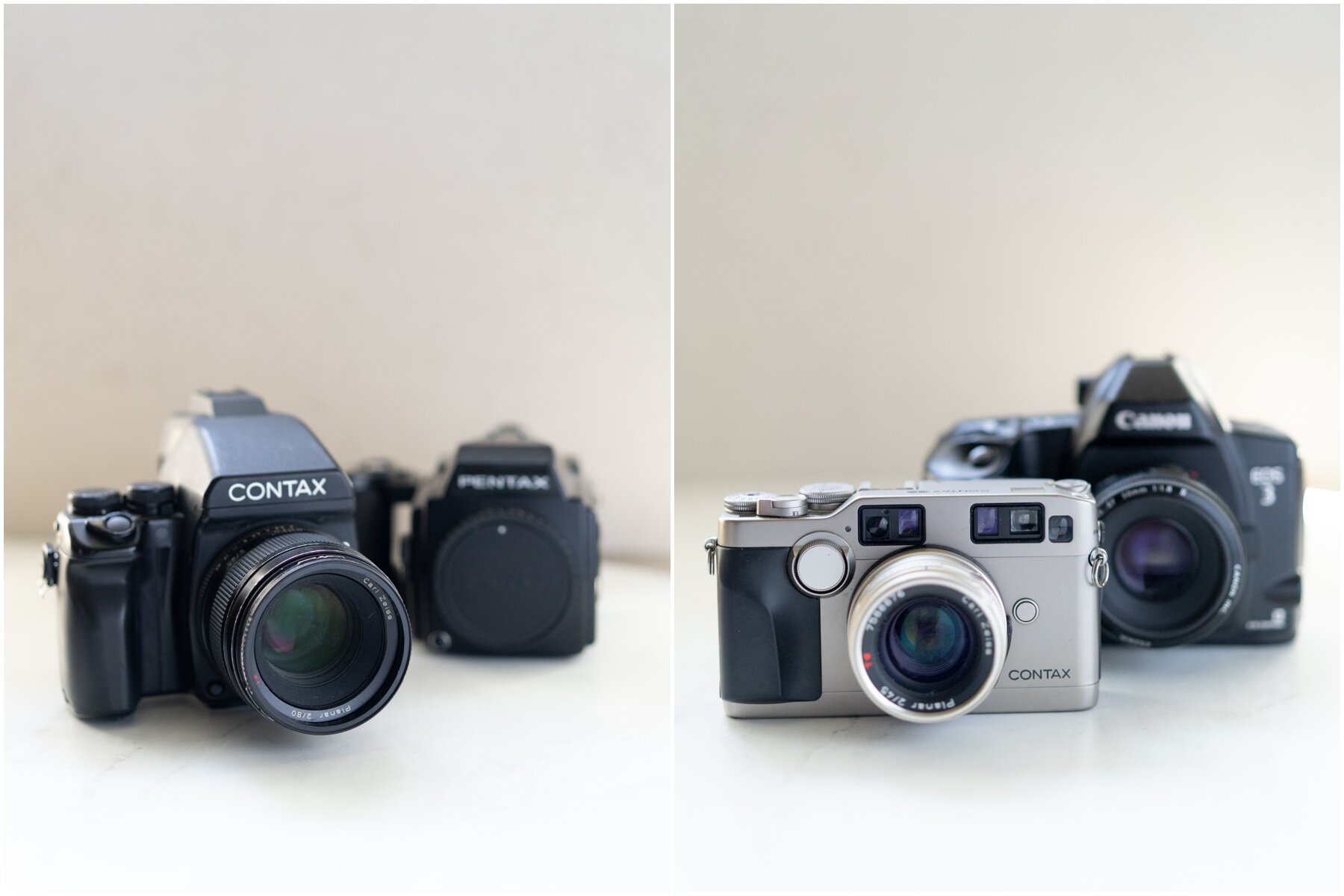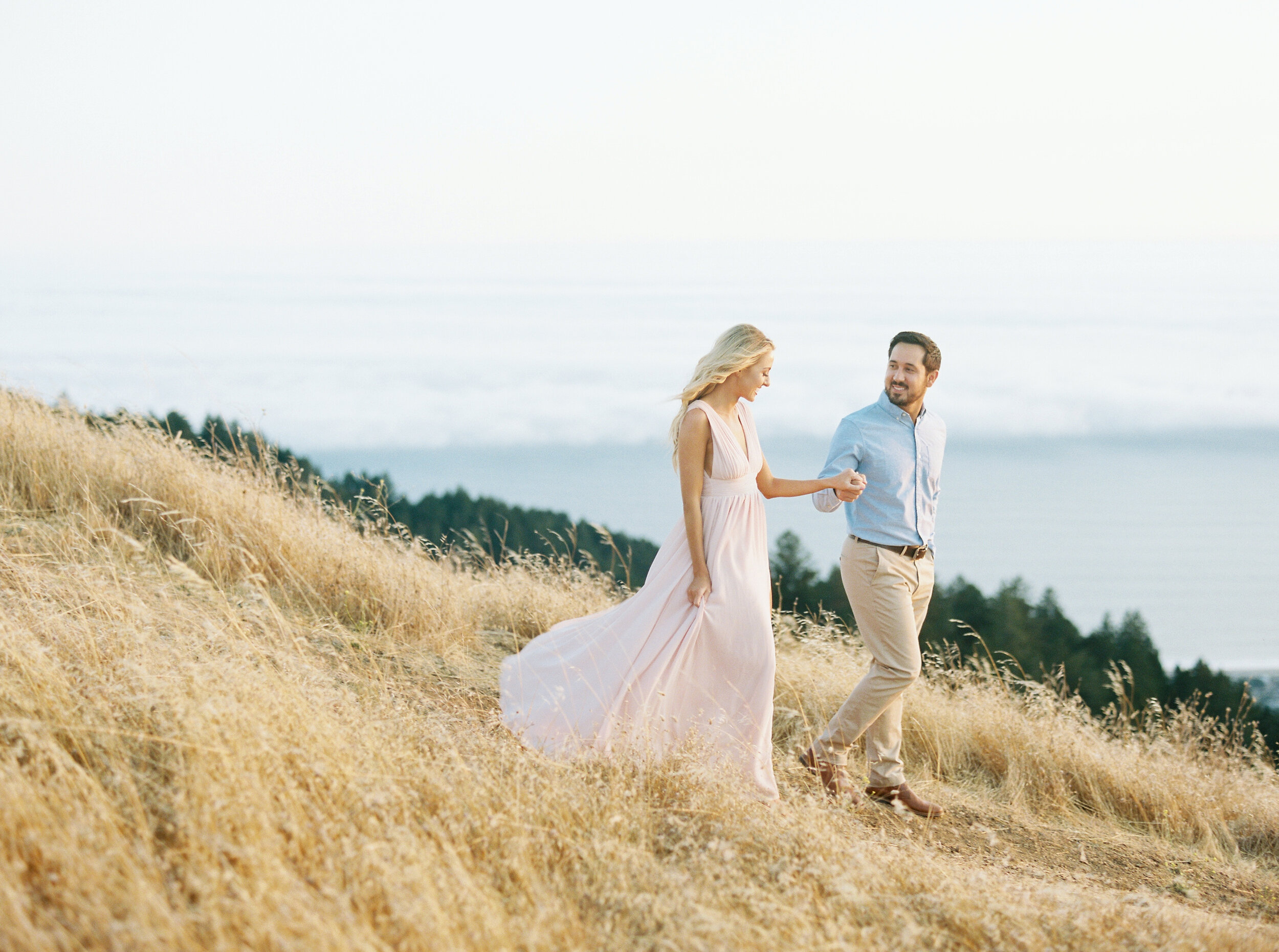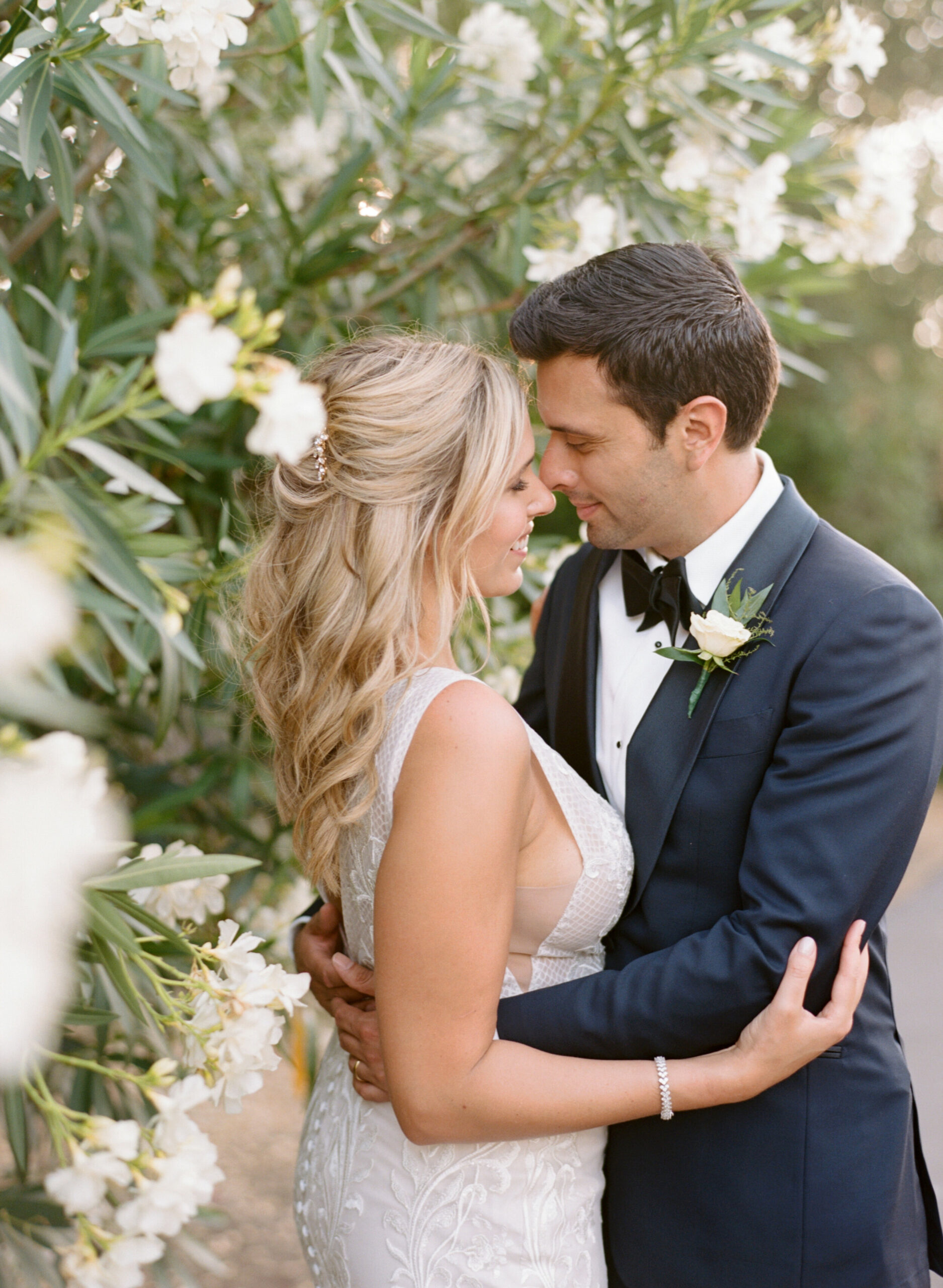Beginners Guide to Film Photography
First things first, why is it that you want to shoot film? There is such a beautiful freedom of being able to take a photo, not see it on the back of your camera and know it is still going to be beautiful. I feel that film photography makes photographers better at their craft if they just know how to use it for their personal or using it in their wedding work. Film is doing all the work before you click the shutter when digital can be more of the work after. (A lot of people creating their own style in lightroom) But with film it all has to do with what you do before as well as your lab.
Film can be represented as a great true-to-life capture of the day. While I feel there is a need for both film and digital, film can help boost your work to another level. I hope I can give you a few a few tips to start you on your film journey.
Film is doing the work before you click the shutter
Fuji 400h Film on Frontier scanned by Photovision Prints
Things you need:
Film Camera:
Alright I know (I am already stating the obvious) but with your choice of film camera will determine what type of film you will use for it.
Light Meter:
Besides the Camera and Film, This little thing is so so important! First off what is a light meter. According to google a light meter is “an instrument for measuring the intensity of light, used chiefly to show the correct exposure when taking a photograph.” I like to explain it as a way I can correctly expose the image and not come back with crappy photos later from the lab. It does a lot of the thinking for you so you don’t have to!
Sekonic L-358 (This baby has been through the wringer)
Batteries:
Film cameras use different batteries then what we are used to now a days. Some take regular AA batteries (the good ol Pentax 645) to the Contax 645 needs 2CR5 batteries. Each camera is different so make sure you are stocked up once you receive your camera.
Film:
There are a lot of different options of film to use when you are shooting. The most popular colored film is Portra 400, Fuji 400h and Portra 800. Depending on the camera you choose you will need to purchase either 35mm film or 120mm film. With 35mm film, you get 36 shots and on 120 film you only get 16.
35mm VS 120mm Film
35mm vs medium format Cameras:
Figuring out what camera to start your photography journey can be daunting. There are so many options from 35mm film cameras to bigger medium format and reasons why both are great options. 35mm film cameras are a great way to start interpreting film into your work One reason to shoot 35mm film is depending on the camera, you can get great autofocus, which can help when you are first starting out. Also with it being a little most cost effective at the beginning you also can get a 35mm camera that works with your digital lenses like the Canon EOS 1V. The benefits of 120 is you receive a bigger scan which allows for bigger print size. Also there is a finer grain with 120 film and more of a look when people think “Fine Art”
Great Medium format Cameras: Contax 645, Mamiya 645, the Pentax645n as well as the Hassleblad H1.
Great 35mm Cameras: Canon EOS 3, Canon EOS 1V, Nikon F100. If you like rangefinders, the Contax G2 is a great option too.
LEFT: Medium Format – Contax 645 and Pentax 645 RIGHT: 35mm – Contax G2 and Canon EOS3
Overexposure
Film LOVES light and extremely light hungry. This is why most film is shot overexposed. It can be a little different in thinking because with digital we want to shoot a little more underexposed. Each film type of different and has a different rule of thumb but mostly this is true to most film types. So say with Fuji 400 you will overexpose it by 1 stop to 200 in your light meter and put your settings accordingly.
secret: I shot a wedding all rated 400 with fuji 400h and it turned out amazing and completely fine. Don’t be like me and do that but it was a great indicator to me the the latitude of film is more than you expect.
Start with one film stock and master that. I know there are a lot of different choices out there but if you love one film stock, start with that first. Once you understand how to
Portra 400 scanned on a Frontier by Photovision Prints
Find a Film Lab You Love
Film Labs are so so important for your work. You have to look at it as someone apart of your team helping your images turn out like you invisioned. Each one does things a little different and therefore finding the one that works best for you is crucial. I use Photovision and they have helped me hone in my style through constant feedback and questions I’ve had. I think it’s super important to have a relationship with your lab to enhance your experience and your scans. PV is huge with customer service so I recommend you reach out with any questions.
Top Film Labs include:
Photovision
Richards
The FIND Lab
Goodman Film Lab
Indie Film Lab
me and some of the ladies of Photovision on the left! Love being able to get to know the people behind the lab.
Go out and shoot !
Fear is a huge factor when people start shooting film, do not let that stop you and get out and start practicing. The only way to really become great at film is shoot it yourself. Learn what you like and don’t like and the more you shoot the more you will be comfortable with it. Another great idea is to keep a film journal. When you are practicing notice your settings, the light, how you metered and keep notes. Once you receive your film back you can figure out what worked and what didn’t and compare the way you were shooting.
The journey of film isn’t a short one but it’s worth it .
Portra 400 scanned on Noritsu by Photovision Prints
I hope this was helpful and if you were thinking of picking up film that you go out and start documenting your every day life! If you are interested in learning more into film please reach out about my mentorships. You can learn more about them here and feel free to reach out to me at info@kristineherman.com

